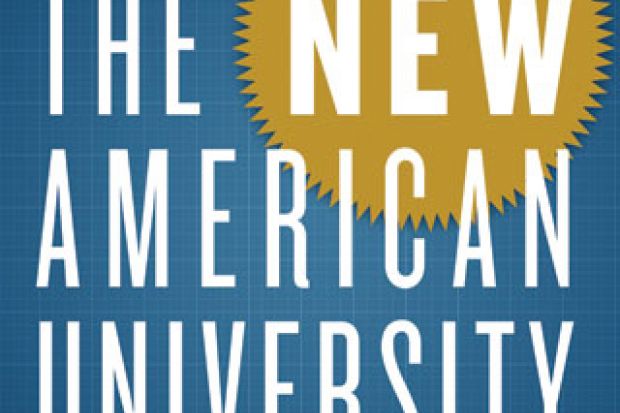Over the course of my academic lifetime, a shared and agreed understanding of how universities work and what they should achieve has been seriously eroded. When universities were fewer in number, and served to educate people who came, in the main, from privileged backgrounds, it was not too difficult to agree what they were all about. But things changed. Many more people from all parts of society entered higher education, and institutions themselves were suddenly expected to be more than just educators of the elite. The key change was the emergence of research not as an academic pastime but as a driver of economic growth and social regeneration.
But how effective have the universities become in these tasks? This is a question that has exercised co-author Michael Crow, president of Arizona State University, for some time. From his experience as a senior academic leader at Columbia University and now at Arizona State, he observed that universities don’t structure their activities to answer society’s big questions and meet its expectations, but rather concentrate on maintaining the integrity of knowledge managed within the demarcation of traditional disciplinary boundaries.
As Crow puts it in the preface, this produces “fundamental design limitations” that cannot adequately confront today’s “social and environmental challenges of unimaginable complexity”. So he decided to develop what he calls the “New American University”, looking for “new ways of shaping and examining problems and advancing questions through cooperation among large numbers of teams, programs and initiatives”. So his university, according to its website, pursues “excellence, access and impact”, and in doing so “assumes major responsibility for the economic, social and cultural vitality of the communities that surround it”.
This book is the story of that endeavour, and it sets out both the intellectual reasoning behind the new model and the history of its gestation. But it is also an invitation to unbelieve some of the things generally regarded as obviously true, including the notion that traditional, well-resourced, research-intensive, selective universities provide the most value to both students and society. The authors quote the late University of Montreal academic Bill Readings, who contended in his 1996 book The University in Ruins that these universities are often hosts to “vicious” and “petty” academic communities, where teaching is under-valued and research is out of touch with today’s needs and concerns.
For all that, Crow does not want to discredit or destroy US research universities, which he and his co-author describe as “the most transformative institutions on the planet”, but rather to bring about the “reconfiguration of existing organization and [a] rethinking of practices”.
An engaging and readable justification for and account of the New American University project, this book devotes significant space to reminding readers of the enormous impact of university research on science, health, technology and lifestyle. But the authors argue that the ability of universities to continue to make an impact of this kind may require a reconsideration of organisation and structure. So they argue that “to an extent insufficiently appreciated, knowledge, organizational structure, and social relations are intrinsically interrelated”. And so, “design is the central concept for the New American University”, and interdisciplinary organisation is the template.
How has this project fared in practice? It is hard to argue with the facts, and since Crow became president of Arizona State in 2002, it has moved upward in some university rankings and has gathered support from influential figures. Crow himself has been recognised as one of the most influential university leaders in America. However, he also has his critics, some of whom voice their objections in the strongest of terms. John Warner, a commentator, author and academic, has called Crow’s vision “terrifying” and has described Arizona State in the Crow era as “dystopian” and “indistinguishable from Amazon”.
So is the New American University a significant and badly needed innovation that will refresh US higher education? Or does it undermine the integrity of the academy? The reader must judge; but whatever your view may be, it is worth reading this book to form that judgement. Whatever you may feel about this project, Crow is unlikely to disappear from view for quite some time.
Designing the New American University
By Michael M. Crow and William B. Dabars
Johns Hopkins University Press, 360pp, £22.50
ISBN 9781421417233
Published 15 March 2015
Register to continue
Why register?
- Registration is free and only takes a moment
- Once registered, you can read 3 articles a month
- Sign up for our newsletter
Subscribe
Or subscribe for unlimited access to:
- Unlimited access to news, views, insights & reviews
- Digital editions
- Digital access to THE’s university and college rankings analysis
Already registered or a current subscriber?





